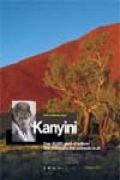
Directed by
Melanie Hogan
53 minutes
Rated PG
Reviewed by
Sharon Hurst

Kanyini
Synopsis: Uncle Bob Randall is a traditional owner of the Uluru lands. In this powerfully moving doco he sits and speaks to the audience about what was done to his people with the coming of the white man. Intercut with astounding black and white archival footage of Aboriginal people in traditional situations, and then later with modern and disturbing images, this film is compulsory viewing for all Australians.Young first-time director Melanie Hogan came to this film after she decided to learn more about her indigenous countrymen. The film was a natural progression from meeting Uncle Bob. “Bob and I wanted to create a film that may help to bring indigenous and non-indigenous people closer together” She just may succeed!
Kanyini, which means interconnectedness in the Pitjantjatjara language, opens with powerful iconic images of the Australian land, with beautiful close-ups of gum nuts and leaves, and then Uluru, with Uncle Bob’s voice-over telling us that his people were all “living in the moment” here when people like Christ and Caesar lived. The film then cuts to the impressive archival footage (sourced from museums throughout Australia) the likes of which I’ve never seen before. We are told how the people were always trained to look after the land and not to take more than they needed. Bob tells us much about the world view and way of life of his people, and describes how they were once “so proud, so big, so responsible”. The deeper meaning of the word kanyini is a reflection of the belief system, the spirituality, the land and the family, each of which has been progressively removed or eroded by the white man’s coming.
And yet Uncle Bob speaks with no anger. It’s as if he’s just sitting and having a yarn, and herein lies the extraordinary power of the film-making approach. As he tells us of awful facts, like the removal of 50,000 Aboriginal children from their families between 1910 and 1970, he speaks so matter-of-factly yet compassionately that it makes you want to weep.
The archival footage, with stunning images of proud women, gorgeous laughing chubby children, hard-working men, only serves as a stark contrast to what we know of the lives of these people today. We then see appalling images of bored lonely petrol-sniffing kids. As Uncle Bob tells of the litany of woes for his people, obesity, diabetes, early death, sick children, full jails, we can’t help but feel all the more ashamed as he laughs and smiles, with no condemnation.
The evocative soundtrack by David Page, Bangarra Dance company’s resident composer, enhances the mood, but it is the heartfelt words of Uncle Bob that are at the film’s core. His simple but eloquent telling, his generosity of spirit, his patience and dignity are overwhelming. With this approach it makes us believe there could be a possibility of reconciliation, once people recognize and learn from the old wisdoms that there is a oneness and interconnectedness to all life in this great continent. Although this may be ultimately too simplistic after all that has gone before, there is still a great sense of hope and inspiration engendered by this film.

Want more about this film?


Want something different?




